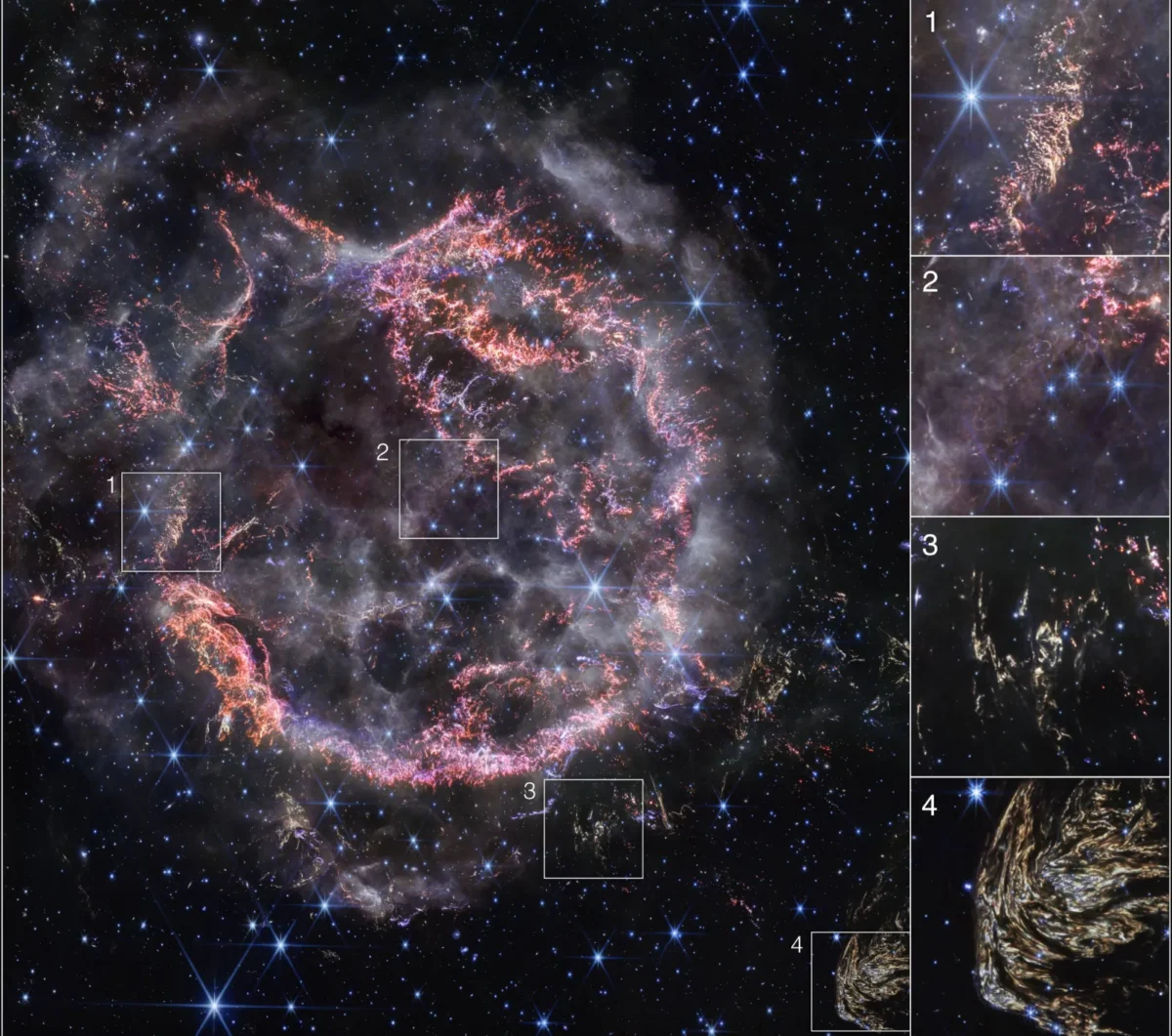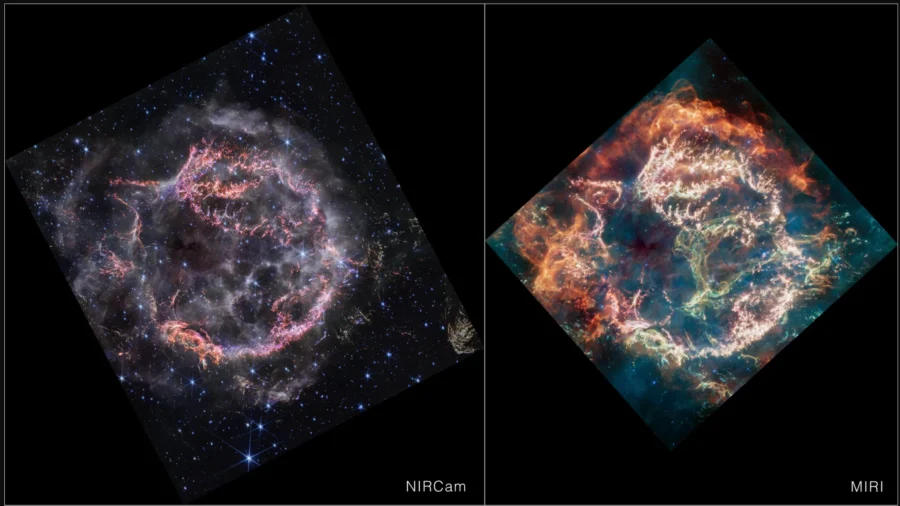A new photo from a faraway supernova gives beautiful warm colors and a strange and timely shape for the first time, using NASA’s James Webb Space Telescope’s infrared capabilities.
Supernova remnant Cassiopeia A (Cas A) was captured in a resolution and colors never seen before, and in a shape that reminds a shining ornament ready to be put on a Christmas tree.
This was made possible using Webb’s NIRCam (Near-Infrared Camera), and while infrared is invisible for humans, image processors and scientists can translate these wavelengths into the visible light spectrum.
The result is a beautiful mixture of orange, pink, and blue, and details showing the explosion products as “shards of glass” in the cosmos.
“With NIRCam’s resolution, we can now see how the dying star absolutely shattered when it exploded, leaving filaments akin to tiny shards of glass behind,” said Danny Milisavljevic of Purdue University, who leads the research team.
“It’s really unbelievable after all these years studying Cas A to now resolve those details, which are providing us with transformational insight into how this star exploded.”
The Cas A supernova remnant is located 11,000 light-years away in the constellation Cassiopeia. It is estimated to have exploded about 340 years ago, from our point of view.
Webb’s razor-sharp view can detect the tiniest knots of gas, comprised of sulfur, oxygen, argon, and neon from the star itself. Embedded in this gas is a mixture of dust and molecules, which might eventually become components of new stars.

Cas A is one of the most well-studied supernova remnants in the universe. However, astronomers have now entered a new era in the study of Cas A. In April 2023, Webb’s MIRI (Mid-Infrared Instrument) started this chapter, revealing new and unexpected features within the inner shell of the supernova remnant. Many of those features are invisible in the new NIRCam image, and astronomers are investigating why.
The newest NIRCam image appears less colorful than the MIRI image. However, this simply comes down to the wavelengths in which the different materials are assigned to be emitting light in the imaging.
The MIRI image translates to more red, yellow, and green hues, with a big green object glowing in the middle of the image, visible only in MIRI, nicknamed Green Monster by the scientists.
This hidden feature was described as “challenging to understand” by researchers.
Researchers were also stunned by one feature at the bottom right corner of NIRCam’s field of view. They’re calling that large, striated blob Baby Cas A—because it appears like an offspring of the main supernova.
NASA says this is a light echo, where light from the star’s explosion has reached and is warming distant dust, which is glowing as it cools down. The intricacy of the dust pattern, and Baby Cas A’s apparent proximity to Cas A itself, are particularly intriguing to researchers.


